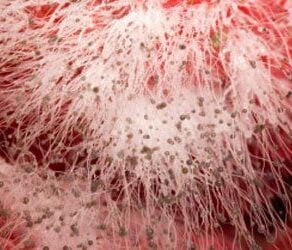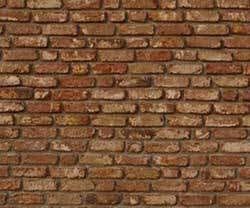There are two reasons to wash the outside of your house; the first is to get it ready for painting. The second is just to make it look nicer (though it’s also a good idea to remove mold or mildew on a regular basis).
are two reasons to wash the outside of your house; the first is to get it ready for painting. The second is just to make it look nicer (though it’s also a good idea to remove mold or mildew on a regular basis).
If you really, really want the exterior of your house to look clean, no matter what kind of siding you have – vinyl, aluminum, wood, brick, or even asbestos concrete shingles, get ready to spend some time and major effort. The best way to most types of siding is to take a bucket of soapy water, a stiff bristle brush on the end of a long pole, scrub it down, and Rinse it off with the hose.
There are a couple of exceptions we know of. Wood shingles do not have to be washed. They don’t even have to be sealed unless you live in an area where there’s an abundance of sunshine or an abundance of rain; there, sealing will slow down the bleaching process. The other exception is for the only siding we know of that is even uglier than asbestos concrete shingles. By some strange coincidence, like asbestos concrete shingles, it is found widely in the state of New Jersey: we’re talking about those sheets of faux brick or stone block stamped out of the same composition stuff you find on most pitched roofs in the East.
Pressure Washing Your Siding
The next best method for cleaning siding is pressure washing, also known as power washing, where you use a high pressure pump creates a high velocity stream of water that blasts dirt away. This is a good way to clean a house exterior or prep it for a new paint job. Spraying water and, in some cases detergent or other solutions does a pretty good job of removing dirt, grime, and chalk-like residue from deteriorating paint from the surfaces of siding and trim. It’s not a better alternative to hand scrubbing, unless your prime concern is to avoid hard work.
A pressure washer is okay for most siding materials, but full pressure should not be used on masonry for fear of blasting mortar from between the bricks. Care must also be taken with pressed board siding for fear of injecting water into dings in the wood, thereby encouraging rot and warping. Care must also be taken with stucco, which can easily be damaged.
If your home is huge, you don’t want to use either method unless you’re making the project a lifetime task. If the place is two stories or more, you will probably want to hire a contractor rather than risk tumbling off a ladder.
Cleaning Mildew from Siding
Pressure washers come in various sizes, from about 1,200 to 3,000 pounds of pressure per square inch. The stronger ones, of course, work faster, but they should probably be restricted to materials like vinyl that can withstand the pressure and which have no paint to peel off. Less pressure is more appropriate to other materials. The washers can be rented, and it’s advisable to get one that allows you to mix cleaning materials with the water.
Power washers will not remove mold or mildew, so you will have to do that by hand prior to using the pressure hose by scrubbing it off by hand. To determine whether blackish areas are mildew or dirt, apply a little bleach solution (one part bleach to four parts water) to the area with a spray bottle. Mildew will disappear; dirt won’t, but it should come off with scrubbing. If you’ve had your portable grill too close to the house, it could be soot. Repeated applying foaming bathroom cleaner to brick and then repeatedly rinsing it should get it off of brick, and we would think that would also get it off of other types of siding. Whatever you’re using, and whether it’s dirt, soot, or mildew, rinse it off when you’re done cleaning it.
Take the precaution of wearing eye protection when using a pressure washer and keep the stream clear of electric motors or transmission lines. Protect or move plants and breakable materials beforehand and clear away obstacles.
Cleaning Stucco
You can’t operate the device from a ladder, and you may not even be able to use an adjustable extension to wash high areas, as that takes a good deal of muscle and coordination. Take that into consideration before you rent the machine. The nozzle should be no more than 36 inches from the target. You can slowly work in closer until you find the sweet spot, but get no closer than a foot or you could damage the surface. Keep it away from windows.
Working from the top down, start with soffits, overhangs, gutters, and downspouts. Then steadily move it across the siding from side to side, directing the stream downward. If you’re using a solution, follow up with a clear water rinse using a garden hose, not the high pressure device.
Stucco should be cleaned annually, as its rough surface is a dirt magnet. This is especially true for light colors that show dirt more than darker colors. A lower pressure power cleaner may be used, but used with care. A good cleaning solution is a bit of dishwashing detergent, a cup of washing soda and a cup of borax mixed with two gallons of hot water.
To avoid damage to stucco surfaces, don’t use concentrated jets of water; use the open jet setting to flood the side of the house with a curtain of water.
A lower-pressure power washer may be used on brick siding, though best results may be obtained by first spraying an oven cleaner on the bricks. If this doesn’t get heavy grime off, try using turpentine, mineral spirits, or paint thinner, which might also be effective in removing paint spots. Latex paint spots will come off more readily than oil-based paint.
If you’re unlucky enough to have cement asbestos shingle siding, it’s only because that stuff never seems to wear out; they stopped making it decades ago. It’s easy to clean, but it’s so brittle that you have to be careful – even a high pressure water cleaner can crack a shingle.









I have been cleaning surfaces for years with a pressure washer. In the right hands, it is an effective tool to not only apply bleach and surfactants, but also, contrary to this article, a fantastic way to remove both dirt and mildew. PLEASE do not discourage this method of cleaning. It is highly effective and can remove the results of years of neglect.
My cedar siding is stained a light gray, and every year, dirt, moisture and mildew create large areas of black grunge, especially on the areas receiving little sun. The rough texture of the siding encourages this and makes it difficult to clean.
I spent the better part of today pressure washing one small area, testing various recommended cleaners– to no avail. It simply removed the loose dirt and lightened the mildew to a medium gray at best, and even exposed the wood in spots where I washed too long or hard. I tried scrubbing with a brush in addition, and it would not budge.
I finally resorted to my old standby, chlorine bleach. I took a spray bottle, filled it with bleach and sprayed a fine mist along the siding, trying not to make it drip. Without touching it, the siding quickly turned perfectly clean–right before my eyes! Section by section, I gently misted the siding, waited a minute, then rinsed lightly with a hose.
Bleach seems most effective the second it hits a DRY surface, then quickly loses effectiveness. When it drips down, you’ll notice it cleans less and less as it travels. Therefore, a very fine mist of fresh bleach along the entire surface kills mildew on contact. It was amazing.
I read many warnings on the internet about using bleach, mostly by people selling other products, but nothing works as well or as fast for me. Just a couple cautionary notes: Wear protection and wear white!
To keep the water/bleach mixture from just running down the wall, add some dish detergent or car wash soap. This makes the ‘water’ wet out and stay so the siding can absorb it and kill the mold.
I agree completely with George’s method described above. My painted cedar shingled house turns dark grey/black in spots and especially on the north side each year. Spraying a Clorax/water mixture works miracles in no time.
I have used a power washer, but one does more harm by tearing the wood than good. I needed to paint over the injured parts. Even more work.
So, I highly commend the Clorax water spray bottle.
Yes, do wear protective eye wear and white clothing!
Is there anything I can apply after the rinse to keep mold from returning?
I was amused to read that asphalt siding was “the only thing uglier than asbestos-cement.” Vinyl and aluminum have both beaten hands-down when it comes to ugliness. Asbestos-cement is the only one of those four that doesn’t have any practical disadvantages (it lasts nearly forever, holds paint tenaciously and doesn’t flap around much in the wind); it’s also not really an imitation of anything else, though the kind with a wavy cut have a slummy connotation to some, mostly elderly, people. Asphalt is probably the silliest looking, especially when it’s trying to mimic stone, but at least it’s not flapping precariously in midair the way aluminum and vinyl do. Unfortunately, the stuff is really flammable, so it should be replaced with something, though the most common fix to this, covering it with vinyl, not only makes it even uglier, but does nothing to mitigate its fire risk.
The worst problem with power washing is that people with algae or mold problems are the most likely to resort to it, and the last thing they need is more moisture. There probably are walls that can be safely power washed, but how can you tell that water is not getting in, until it’s too late? Also, it’s possible for a jet of water to dislodge some of the house wrap-under vinyl siding systems, without which the house will be totally unprotected from rain intrusion.
I have motor oil stains on the exterior aluminum siding of my house; how do I get them off?
I need advice on electric power washers. I have a vinyl and brick house. Should I buy an 1800 or 2000 pressure washer?
I am really concerned about my newly planted Texas sage and plants below the stained exterior. Will the bleach or other products mentioned harm them? They are expensive. I have T-111 siding that is painted light grey. A green stain has appeared. It has been terribly hot here in central Texas. Thanks.
Gary,
Yes, bleach and other chemicals can hurt the plants. For example, bleach and borax are both very alkaline and your plants could prefer a more acidic (or just less alkaline) soil. Regardless of the pH preference of the plants, bleach can harm the plants for other reasons as well. There are soil pH testers at hardware and gardening stores that you can use to test the soil pH before and after you clean if you need to use a lot of borax or another high/low pH chemical.
You can try covering the plants with a plastic painter’s drop cloth; they cost a dollar or two at Walmart. You can even tape the drop cloth along the bottom edge of the siding to prevent any runoff and instead let the water run off on either side of the drop cloth. (You may want to test this first to make sure that the tape won’t peel off any paint. Try using a less adhesive tape, such as masking tape.) Also, water the plants thoroughly about 30 minutes to an hour before you start cleaning so that they are already full of water and don’t try to drink any of the runoff. Also rinse the area thoroughly to dilute the chemical in the runoff.
Source: Advanced BioTech – pH Scale Comparisons
Source: eHow – Does Clorox Bleach Kill Plants?
Source: Wikipedia – List of adhesive tapes
I have over 20 years of pressure washing experience and this is my process for house washing:
1. Product:
– Outdoor Bleach, unless you have HardiPlank. For HardiPlank, I use dish soap or car wash soap. Bleach can dry quickly in 80 degree temps. If it dries on hardiplank, it can be a pain to remove.
2. Proper equipment:
– 24′ extension wand (like this example)
– 20′ telescopic extension pole w/ attachable brush (like this example)
– 3500 psi or more pressure washer
– adjustable foam generator lance (like this example)
– 8′ step ladder (for that extra few feet if needed; be very comfortable with the equipment before attempting to pressure wash from a ladder)
3. Process:
a) Use the foam generator to apply bleach from the ground attached to the factory wand end. 32 ounces of bleach sprayed on with this method will reach over 30+ feet high and cover one whole side of most 3000 sq. foot homes.
*Note: Start from the bottom and go up as to avoid streaking issues that can occur if you go top-down
-Use the 20′ extension pole w/ brush attachment to scrub hard-to-reach gutters and mildew covered walls. I use the brush on all mildew covered areas before I pressure wash if possible. The results are superior and it saves time when pressure washing as mold and mildew shoot off much easier after a scrubbing.
b) Attach the 24′ foot extension (25 degree or 40 degree tip). Start from the top and move left to right (back and forth) in sections that you are comfortable with, being mindful of keeping the bleach sprayed section wet to prevent it from drying. Slowly move down the wall overlapping your previous stroke by 50% for best results.
c) Adjust and use the 24′ extension wand up to the point where you can pressure wash with the factory lance from the ground.
– Repeat steps a,b, & c for each face of your home.
Also, my method dilutes the bleach to where I ‘never-ever-never-ever’ hear complaints about plant life dying. (I hope I didn’t jinx myself). Frankly, my method sprays enough water that dilution for plant safety is usually a given. Yet, it’s always best to wet plants down before any chemicals can touch their surfaces.
How does the bleach mix affect windows? Does it leave streaks that are very difficult to remove if left to dry. How does bleach work on steel siding?